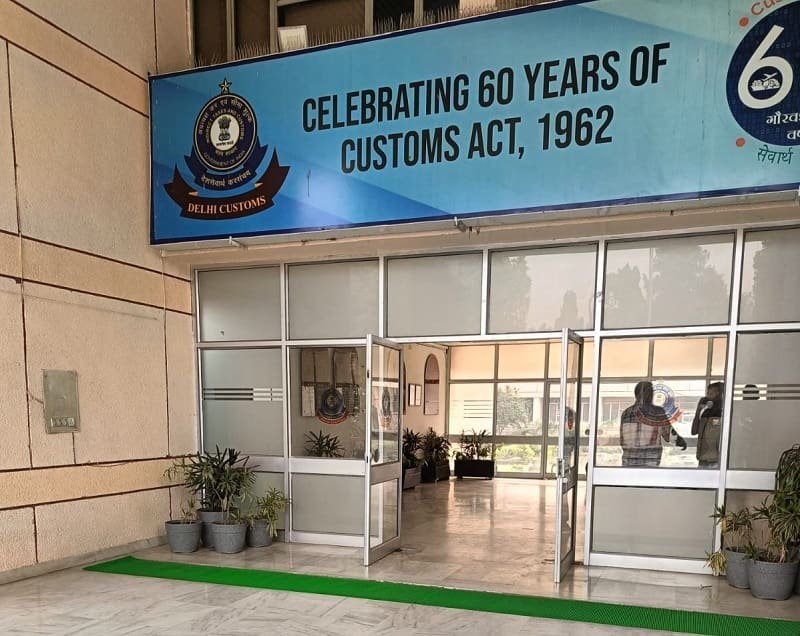Migratory Species: What is the Convention on Migratory Species and how does it matter to India?
INTRODUCTION
“Wild animals in their innumerable forms are an irreplaceable part of the earth’s natural system, which must be conserved for the good of mankind”
“Each generation of man holds the resources of the earth for future generations and has an obligation to ensure that this legacy is conserved and, where utilized, is used wisely” – from the preamble of the convention.
The Convention on migratory species (CMS) also known as conservation of migratory species of wild life or Bonn Convention as it was held in Bonn, Germany. The CMS is an environmental treaty of the UN that gives a worldwide stage to the protection and reasonable utilization of migratory creatures and their living spaces. It is the main worldwide convention gaining practical experience in the preservation of migratory species, their natural surroundings and migration routes.
The settlement was signed in 1979 in Germany and is known as the Bonn Convention. According to CMS website “CMS brings together the States through which migratory animals pass, the Range States, and lays the legal foundation for internationally coordinated conservation measures throughout a migratory range.” this convention plans to save earthly, marine and avian transient species all through their range.
It is one of few intergovernmental treaties worried about the protection of natural wild life and wildlife habitats on a worldwide scale. Since the Convention’s enforced on 1 November 1983, its participation has developed to 80 (starting at 1 September 2002) Parties from Africa, Central and South America, Asia, Europe and Oceania. This convention covers large variety of migratory species. This includes many variety of mammals like land mammals, marine mammals, bats, fish, reptiles, birds, insects etc. the Convention on the Conservation of Migratory Species of Wild Animals (CMS) gives a worldwide stage for the preservation and manageable utilization of transient creatures and their environments.
The Convention unites the states through which transitory creatures pass, and lays the lawful establishment for preservation gauges all through the species’ transitory range. Measures are implanted in point by point preservation and the board plans. The shared objective is accomplished by two methods: deliberate activities for endangered species and co-operative understandings for transient species that have an un favorable protection status.
PURPOSE AND OBJECTIVE
To conserve the migratory species of wild animals is one of the main purposes of this convention which can be achieved through developing international cooperation. Article II of the Convention deals with the fundamental principles and main objectives of the Convention. These wild animals are very important for our environment as well as ecology so they need a special kind of attention. The main objectives of this convention are-
• To conserve and promote the migratory species which are listed in the CMS appendices.
• To center and priorities preservation activities for transitory species
• To enhance universal membership in CMS through targeted promotion of the convention’s aim
• To ensure the best implementation of the convention.
• To increase the universal awareness and relevance of CMS.
• To make plan for proper funding for functioning of CMS.
SCOPE
There is an earnest need to connect with and influence those areas of economic action which have effects on migratory species, to guarantee that worries identified with the protection of migratory species are incorporated in national planning and need setting, for Parties to execute completely their obligations for species mentioned in Appendix I and appendix II. It is also important that through a continuous procedure of audit utilizing the best accessible sources of data, the Appendices reflect precisely the scope of species most needing consideration.
This basic undertaking is the duty of individual Parties, the Scientific Council and the Conference of the Parties) in the principal occasion, to guarantee that national protection needs for transient species are tended to and, in the second, to give precise logical guidance to the Conference of the Parties which should then decide in light of all accessible data, the most suitable plans and action.
According to the facts they move over significant long distances that’s why these transient creatures give regular connections between various biological systems and various nations. CMS is interestingly set to fill in as a system for satisfying those aims of the Convention on Biological Diversity which are related with transitory species. All the plans of CMS Parties and of the Secretariat need to be strengthened so as to act and serve very effectively. All the organs of the convention like the conference of the parties, the scientific council, the secretariat and the standing committee will ensure about the growth of this convention that they must work properly.
WHY CONSERVE MIGRATORY ANIMALS
World’s 1.75 million or more creature, at least 8,000-10,000 used to migrate. They utilize various natural surroundings for various periods of their life cycles, living in one condition for some portion of the year and reproducing in another, or gathering in one zone and scattering over another. As they rely upon various environments, which they use as venturing stones during their relocation, they are more helpless than vulnerable creatures. They range from antelopes to fish, from whales to elephants, from bats to flying creatures.
Indeed, even delicate bugs, for example, the monarch butterfly. Migratory creatures are fundamental parts of the environments that support all life forms on Earth. By pollinators and seed disperser they become the most essential part of our ecosystem. They give nourishment for different creatures and direct the quantity of species in biological systems. Transient creatures are possibly exceptionally powerful pointers of ecological changes that influence everyone. In local and worldwide economies, as well, migratory creatures play a significant role. They have become prime attractions for Eco tourists, for example, flying creature spotters or whale watchers.
Moreover, transitory species have an incredible centrality in numerous societies – in legends, stories, religions, medication and customs. They even play a significant role in the manner we measure time and experience seasons. These days people also benefit from them for recreational exercises and academic purposes. That’s why we need to conserve migratory species and that’s why we need a s, convention like CMS.
APPENDIX I AND II OF CMS
There are two appendices of CMS. These appendices contain the list of those migratory species on which this convention applies. The Appendix I of the Convention is explained under Article III of the Convention and Appendix II of the Convention is explained under Article IV of the Convention respectively.
Appendix I contain transient species that have been surveyed as being at risk for extinction. The Conference of the Parties has further explained the word “endangered” as “confronting a high danger of elimination in the wild soon.” this convention will try to carefully secure the migratory species which are listed in appendix I by preventing the taking of such species, with limited scope for exemptions and saving them by fitting and re-establishing their environments and prohibiting, removing or mitigating the problems to their migration and controlling different situation that may risk them.
Appendix II contains the migratory species that have a troublesome preservation status and that require universal understandings for their protection. Just as those that have a preservation status which would essentially profit by the worldwide participation that could be accomplished by a global understanding. The Convention encourages the Range States to species recorded on Appendix II to finish up worldwide or provincial Agreements for the preservation of individual species or gatherings of related species.
At any of the meeting of conference of the parties these appendix I and Appendix II can be amended.
The Conference of Parties shall be the decision-making organ of this Convention which is explained under Article VII. The Secretariat shall be established for the purpose of this Convention under Article IX of the Convention. Following are the functions of Secretariat-
a) to arrange service meetings:
b) to maintain liaison with and promote liaison between the Parties, the standing bodies set up under Agreement and other international organizations concerned with migratory species;
c) to obtain from any appropriate source reports and other information which will further the objectives and implementation of this Convention and to arrange for the appropriate dissemination of such information;
d) to prepare for the Conference of the Parties reports on the work of the Secretariat and on the implementation of this Convention;
e) to maintain and publish a list of Range States, which is explained under Article VI, of all migratory species included in Appendices I and II
f) to provide for the general public information concerning this Convention and its objectives.
g) Any other function as may be prescribed.
GUIDELINES FOR AGREEMENTS
The object of each agreement shall be to restore and conserve the migratory species concerned to a favorable conservation status. Each agreement should deal with those aspects of the conservation and management of the migratory species concerned which serve to achieve its object.
2. Each agreement shall cover the overall range of the migratory species concerned and should be open to accession by all Range States of that species, whether or not they are Parties to this Convention.
3. One agreement shall, wherever possible, deal with more than one migratory species.
4. Each agreement should:
a) identify the migratory species covered;
b) describe the range and migration route of the migratory species;
c) provide for each Party to designate its national authority concerned with the implementation of the agreement;
d) establish, if necessary, appropriate machinery to assist in carrying out the aims of the agreement, to monitor its effectiveness, and to prepare reports for the Conference of the Parties;
e) provide for procedures for the settlement of disputes between Parties to the agreement; and
f) at a minimum, prohibit, in relation to a migratory species of the Order Cetacea, any taking that is not permitted for that migratory species under any other multilateral agreement and provide for accession to the agreement by States that are not Range States of that migratory species.
INDIA AND CMS
Since 1983 India is a party of CMS. According to the statement made by Ministry of Environment, forest and climate change “India is a temporary home to several migratory animals and birds. The important among these include Amur Falcon, Bar- headed Geese, Black-necked cranes, Marine turtles, Dugongs, Humpbacked Whales, etc. the Indian sub continent is also part of the major bird flyway network i.e., central Asian flyway (CAF) that covers areas between the Arctic and Indian oceans, and covers at least 279 populations of 182 migratory water-bird species, including 29 globally threatened species. India has also launched the national action plan for the conservation of migratory species under the central Asian flyway.”
According to the press of February 2019 it was said by the ministry that India holds the non legally binding MoUs for the preservation and management of Marine turtles (2007), Siberian cranes (1998), Dugongs (2008) and Raptors (2016). The recent CMS COP13 contains new ideas and new initiative which include idea to make addition of 10 more new species under CMS which are “The Jaguar, Asian elephant, Great Indian Bustard, Smooth hammerhead Shark.”
According to united nations environment programme (UNEP) India is to host the next convention on the conservation of migratory species (CMS) conference of parties 13 (CMS COP13) in year 2020. It is also known as global wildlife conference.
The thirteenth meeting of the Convention on the Conservation of Migratory Species of Wild Animals (CMS COP13) being hosted by India is the first international meet focusing on biodiversity in what has been slated as the “super year for biodiversity”.
In the Convention meeting 2020 Environment Minister Prakash Javadekar said:-
“We will discuss the conservation of migratory birds, mammals, terrestrial and aquatic species, these species represent our heritage. All these species, which are nature’s treasures, need to be conserved and preserved. The Convention on Migratory Species is a critical instrument for this. There international unanimity on the need for cooperation and collaboration to do this—more than 3000 experts, civil society members, and government representatives from 130 countries including 15 ministers ministers will be part of the week-long deliberations,”
CONCLUSION
Thus, the Bonn convention aims to conserve the migratory species so we can say that CMS plays an important role in conserving our biodiversity or altogether we can say that there is a large contribution of CMS in conserving our earth’s biodiversity. This convention holds the considerable potential and power to conserve the species at risk. It is little disappointing that this convention has still only 13 parties which can slow the process of this convention so it is important that many country become parties of it. Alltough this convention is still in its early days so it would be wrong to judge it at this stage. In future this convention will get more significant values as it works for the conservation of migratory species.
Also Read: Rotterdam: Overview of Legal Status of Rotterdam Convention
REFERENCES
- www.cms.int
- www.unenvironment.org
- www.insightsonindia.com
- https://economictimes.indiatimes.com/news/politics-and-nation/india-to-host-key-meet-on-conservation-of-migratory-species-of-wild-animals/articleshow/74169489.cms?from=mdr
Edited by Our Legal World






![Jamia Hamdard Mediation Competition 2025 at School of Law, HILSR [21st February 2025]](https://ourlegalworld.com/wp-content/uploads/2024/12/Screenshot-11-min-1.png)


